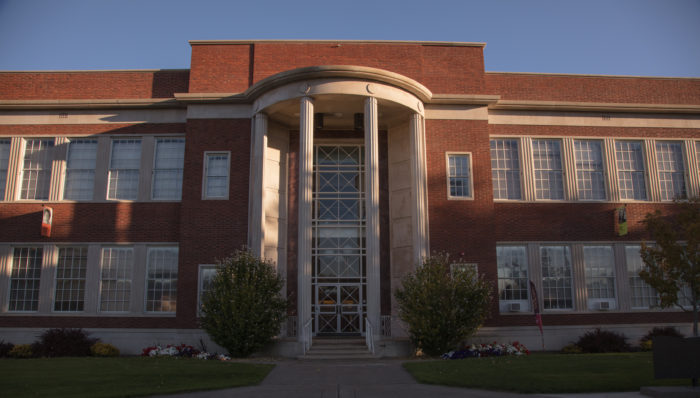
Lind Hall is named to honor Edmund L. Lind, who taught chemistry at CWU from 1936 to 1964. Lind was chair of chemistry and the science and mathematics division for 28 years and conducted research for the Atomic Energy Commission at Argonne and Oak Ridge national laboratories.
Lind was born in January 1900 in Illinois and grew up in Crawfordsville, Indiana. After graduating from Wabash College with a degree in chemistry, Lind earned his PhD in physical chemistry at the University of Chicago.
Lind worked on the research staff for Pure Oil Company for a number of years before accepting the position as chair of the Division of Science and Mathematics at Central in 1936. In addition to his teaching and administrative duties, Lind served for many years as a reserve officer in the Chemical Warfare Service and the Chemical Corps, including in an active duty role during World War II.
Lind was also actively involved in the planning for the building that would eventually bear his name. In 1941, the Washington Legislature appropriated funds to build a new science building on campus but the project was held up due to wartime building supply shortages.
During the war years, Lind and President Robert McConnell used the delay to investigate other science buildings in Washington and Oregon to gather ideas to incorporate into the design of the project. In 1946, funding was released for the science building, which was completed a year later.
The two-story brick structure with a third-floor penthouse (leading to an astronomical observatory on the roof), was the first campus building devoted entirely to science teaching and is built in a Neo-Classical Revival architectural style.
For its first 17 years, the building was known as the Science Building. But on May 13, 1964, a day after Lind officially retired, it was named in his honor by CWU President James Brooks. Lind continued to be active in the university community for many years. He died on July 17, 1995, in Olympia, WA.
In addition to the brick facing, the building boasts Indiana limestone window surrounds and cornices as well as two-story fluted columns at the main entrance. Inside, it has pink terrazzo stairs and a central foyer paneled in white oak.
Near the center of the building is a 36-foot-tall Foucault pendulum that passes through an opening in the floors of the second story and a third-story penthouse. The word “SCIENCE” is etched in the sandstone above the entrance.
The building was slightly modernized and remodeled in 1954-55 and offices and laboratories were remodeled in 1963. A Physics lab was added in 1978 and an elevator in 1982. In 2017-18, the structure was remodeled to become the new home of Department of Communications and ROTC programs, with the science departments moving into the new Discovery Hall.






comments powered by Disqus